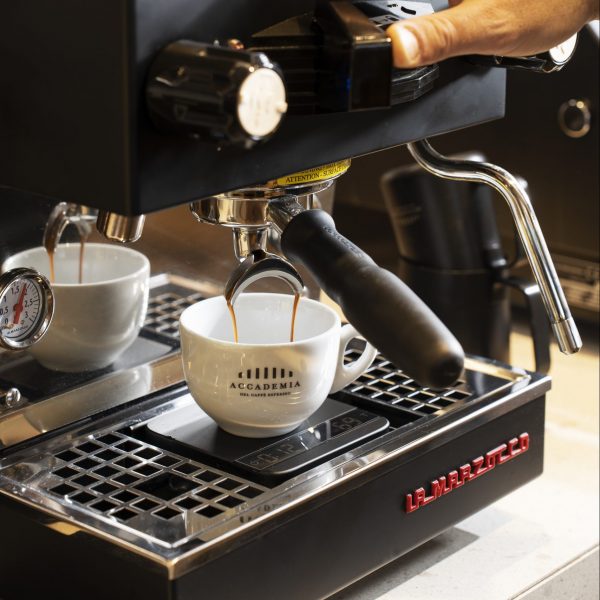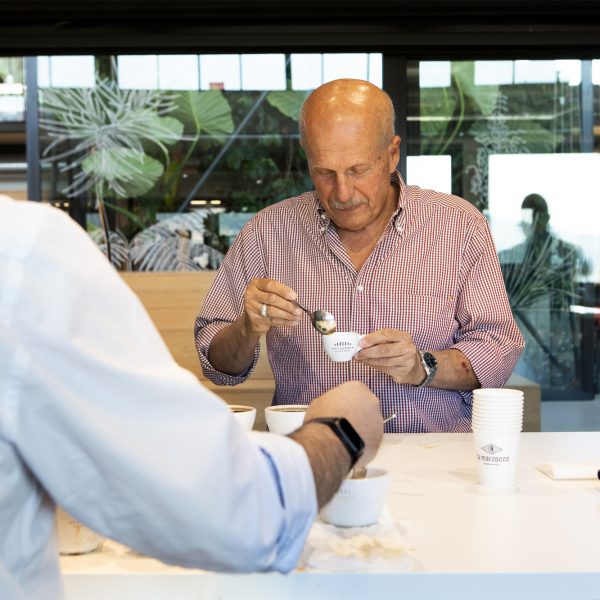Blog
Coffee as a drink began to spread progressively in the 17th century; however, it is the chronicles of the 18th century that document the dynamic pace with which public places began to flourish in various cities of Europe, sought-after meeting spots and places for encounters and cultural exchange – in which it was possible to sip coffee: from Vienna to Hamburg, from Venice to Paris to London. Consumption was not yet widespread, the raw material was still expensive and difficult to find, therefore coffee was intended for a niche. At this precise moment in history, not all social classes could afford the luxury of coffee, a product that was weighed with precision scales and sold on the counters of pharmacies.
Initially, the elegant Cafés where the drink was served only and exclusively at the table were frequented by a wealthy clientele.
For real mass consumption of coffee, perhaps sipped standing at the counter according to modern custom, we will have to wait until the period following the Second World War, when Italy began to overcome, little by little, the economic and social difficulties inherited from the war.
Coffee machines are extremely popular tools, used at home but also by professionals. When did they first appear and how did they evolve?
It is necessary to distinguish between coffee makers for home use and espresso machines intended for public places, that is, two completely different types of machines that have a long history behind them. The shape of coffee makers is closely tied to the various methods of coffee extraction that have always influenced aesthetic appearance; in fact, there are at least ten operating systems for machines for home use that we can list: infusion by boiling, percolation or filter, inverted percolation, pump percolation, percolation with recycling pumping, filter press, hydrostatic percolation, vacuum or depression, steam pressure, piston pressure. Some are methods that are still known and used throughout the world, while others, with the passage of time, have gradually slipped into oblivion. The operating system adopted for each coffee maker inevitably influences the structure of the product. The materials used to make these splendid objects can also vary, from the most common brass or copper containers suitable for boiling infusions to the refined porcelain machines and glass globes that in the past adorned the tables of the nobility homes.
As for espresso coffee, however, it is important to first remember its all-Italian origins as well as the invention of the machines suitable for dispensing it. It is a fascinating story that we can summarize in broad terms. In 1884, the Turin entrepreneur Angelo Moriondo filed a patent for an innovative cylindrical, steam-powered machine capable of producing one or more cups of coffee in a relatively short time. Moriondo, however, only produced a few examples for his own commercial establishments as a promotional attraction. One of these devices was presented at the Italian General Exhibition in Turin (1884), obtaining important recognition and the attention of the press. However, it was the Milanese engineer Luigi Bezzera, at the beginning of the twentieth century (1901), who industrially produced and distributed these imposing “column”-like machines, with a vertical model, this encouraging a wide-spread diffusion of this novel item. These new machines decorated with Art Nouveau friezes, colored enamels and miniature ornaments (winged victories, eagles, etc.) were placed on cafè counters – and contributed to furnishing these caffeinated environments with their refined presence. They were put into operation by specialized personnel, engineers with a “license” who were able to manage safety valves and steam pressure. The name “espresso” was attributed to the “instant” nature of the coffee that was timely served on spot, thanks to the innovative steam machines originated in this period – and which made reference to the possibility of offering a coffee that was always fresh and prepared “expressly”, swiftly upon the customer’s request.
Not only that, the name “espresso” with which the drink was renamed was an explicit reference to the category of the trains distinctive of the historical time. The combination of the name of the infused beverage and the speed of the railway vehicle suggested, in fact, the idea of a rapid drink delivery into the cup. It is worth remembering that the use of “column” machines improved the quality of the drink, but had an unpleasant side effect: the steam damaged the substances that formed in the filter, giving the coffee a burnt taste. Furthermore, these machines were not able to produce the coffee cream and so did it become necessary to wait until the post-war period to obtain an espresso that was characterized by the typical “crema” on the surface. This period is particularly important in the history of the development of espresso machines. In the mid-1940s, in fact, the cylindrical and vertical shape (Bezzera model) of the machines was replaced by the horizontal development (already conceived in 1939 by the Bambi brothers): an idea that would allow for more group heads and extraction, greater ergonomics and the possibility to prepare more espresso’s to more customers at once… yet, the real revolution occurred when Giovanni Achille Gaggia, owner of a Milanese bar, after several years of research and attempts, created a lever-actuated machine.
It was 1947 when the barista-entrepreneur from Milan filed a patent that certified a radical innovation and coffee machine operating system compared to the past: one that functioned thanks to a piston assisted by a spring (a lever capable of pumping water under pressure onto the coffee powder and puck).
The registration of that patent proved fundamental for the history of espresso coffee and Italian customs; with the invention of the lever machine, in fact, a new way of enjoying coffee was born that had no precedents, a dense and creamy espresso that initially surprised customers but then won them over for good. Further steps in the evolution of espresso machines will occur in the following decades with the invention of the “continuous delivery” system and with the birth of the “super-automatic” machines around the end of the 1960’s.



